Helen Hunt, 60, Stuns During Her Latest Appearance, and Her Lips Become the Center of Attention

Amongst the swamps lives a strange bird with a Dutch clog for a beak. It screeches a high pitch whine, notifying other shoebills that this is its area when it comes to food. Its eerie calls add to the surrounding roars of dinosaurs in the distance. It’s not hunting dinosaurs, though, of course, but snakes, fish, lizards, and frogs amongst the reeds.
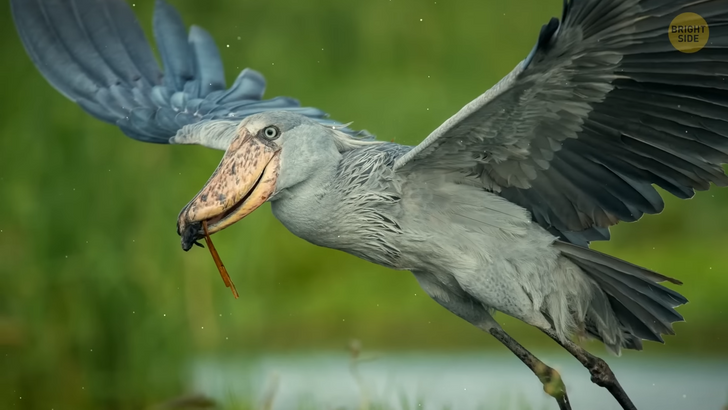
This bird continued to survive even as the dinosaurs left this world. Fossil records of the Shoebill date back to 65,000,000 years ago! And today, it continues to hunt in a similar environment. Although once widespread, today, its restricted habitat is within several countries in Africa. The shoebill stands up to 60 in tall, and its broad wings are built for soaring across the plains.
But the main feature of the shoebill is, of course, its beak. Ancient in appearance, it’s gone unchanged for ages. Its huge bulging bill measures up to 9 in, which makes it the third-largest among all living birds. The upper mandible of the beak ends with a sharp nail, perfect for its prey. It lets the bird take them out with an instant peck.
With a wide range of food at its disposal, it’s known as one of the most terrifying birds. Its hunting behavior is still as effective as it was millions of years ago, which has made its survival possible. It feeds mainly on aquatic animals, fish, frogs, lizards, and even small crocodiles! So, there’s always been plenty of options at its own “all-you-can-eat buffet”.
Surprisingly, their relationship with humans is a pretty chill one. That’s why they’re so popular among birdwatchers. This cool guy is just standing idle, staring down the lens, as if to say, “I’ve seen a lot worse than you!”
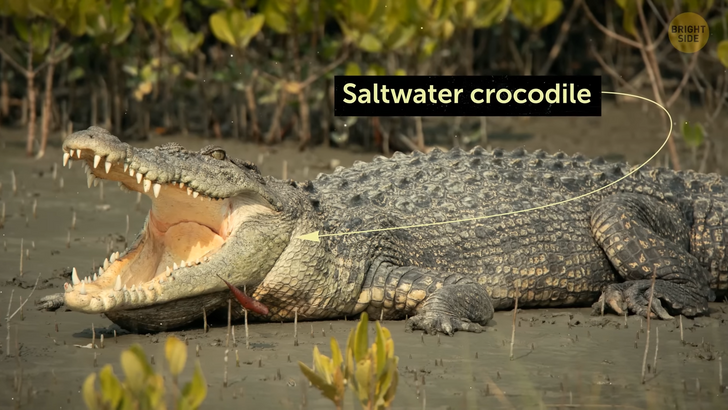
Lurking under the water in many countries around the world, another opportunistic hunter lays low beneath the shallows. Meet the Saltwater crocodile! With an appearance that just straight-up tells you it’s ancient, it’s been around for over 240,000,000 years. Once appearing a lot larger, they’ve always had a reputation for taking down whatever came too close, even dinosaurs!
They survived many catastrophic events and have continued to adapt to each of them. As they continued to evolve, they’ve become the ultimate survivalists as we know them today. Still, they sit within their territory, waiting for anything to enter, even humans. They grow up to 20 ft and have a powerful bite that’s stronger than any other animal. 30 times stronger than YOUR bite, just saying!
Anything that ends up in its toothy cage cannot escape. With scales and armor plates protecting it, there isn’t an animal on Earth that hunts it, making the crocodile the ultimate apex predator. As per its name, it also adapted to saltwater, providing it with useful salt glands, something its alligator cousins don’t have. And that’s how they’re able to swim enormous lengths out to sea.
Their routes follow ocean currents, and they aren’t afraid of bypassing the shark-infested waters. Not even the great white would mess with this one! The distances they’ve traveled measure up to 390 miles, and they’re capable of reaching speeds up to 18 mph. Just another reason not to swim in the sea — right?
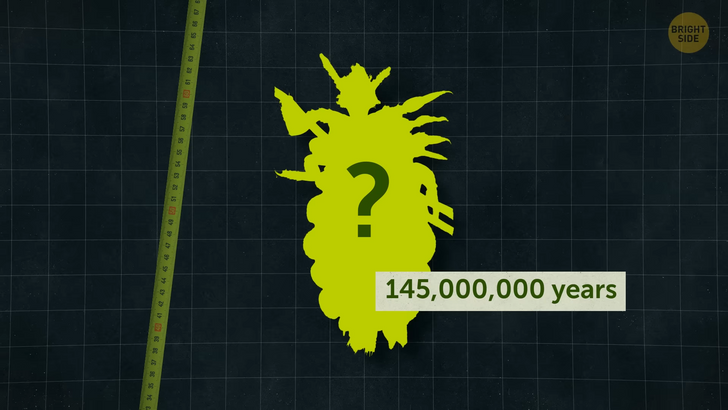
The next creature on our list has been around for up to 145,000,000 years. These pesky little things have been feeding off warm-bodied animals. Can you guess what I’m talking about? Lice! Those guys originated in the cretaceous period [between 145.5 and 65.5 million years ago] when they used to feed on dinosaurs once upon a time.
And then, they have continued to remain a constant annoyance to most species. Currently, there are 5,000 different species of lice, each one having a taste for a different animal. They feed on all birds and mammals, except for pangolins and bats. Hmmmmm, lucky them.
They are an “obligate parasite,” which means they cannot live unless they live off another life form. Living their entire lives to reproduce on their “hosts”, lice will change their color to match the fur or feather of their new homeland. But how do you get lice as a human?
Well, it’s purely by luck or bad luck. They usually choose to leave when their original host has passed on. They seek a free flight from a nearby fly, grabbing onto its legs and hitching a ride to the new homeland.
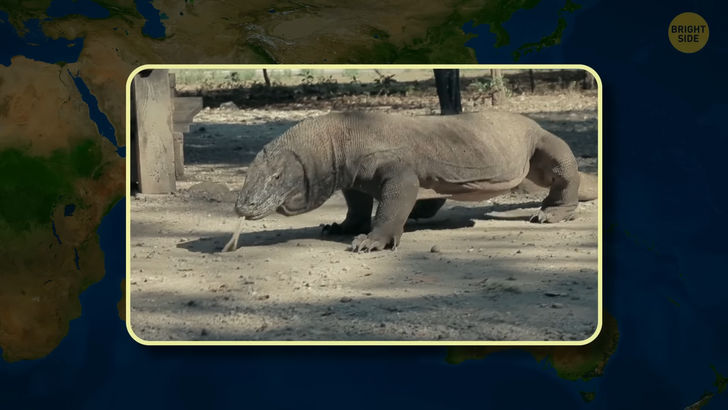
Within 4 small islands in Indonesia lives a powerful beast, a reminder of the megafauna period. Meet the Komodo dragon! Reaching a length up to 10 ft, it’s a master ambusher. Its hunting method involves tracking down prey, then injecting venom into it.
As the prey escapes, it will track it down as it slowly tires and then feeds on it. And that’s how it’s managed to survive for millions of years. But it has strangely disappeared from other parts of the world. These islands weren’t always its home, and it’s only been here for the past 4,000,000 years.
Originally, the dragon’s ancestors came from Asia but migrated south to Australia 40,000,000 years ago. And with a great range and variety of food, that’s where they grew to their massive size. Then some 25,000,000 years later, a collision with continental landmasses occurred between Australia and Southeast Asia.
Taking the opportunity, they spread even further, as far as East Timor. As the islands became separated, the Komodo dragons continued to flourish in their new lands. Without any competition, they could maintain their normal hunting methods. Unfortunately, in Australia, they all eventually disappeared due to competition from humans.
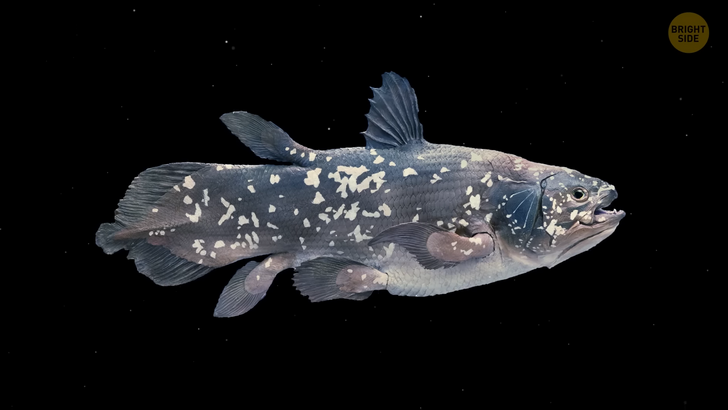
Another ancient species is really intriguing, not only because of its appearance. Let me introduce to you — the Coelacanths. Scientists found the only evidence of their existence in their fossils. It made us believe they disappeared 410,000,000 years ago. So, you could imagine the surprise when they were discovered in 1938, idly swimming along the east coast of South Africa.
It’s truly a fossil that’s come back to life. It gave us a great opportunity to not only further understand this species but to answer many questions about some of its relatives. Growing up to 6.5 ft, they have a lifespan of up to 100 years. But what’s strange is they have 8 fins! They’re the oldest known living member of the lobe-finned fish.
They are so ancient that they’re more related to amphibians, reptiles, birds, and even mammals than to the ray-finned fish we know. Armored with strong Cosmoid scales and with a hinge on their jaw that allows them to open their mouth very wide, they are truly ancient-looking creatures. But they did evolve slightly differently than their ancestors, although they still look the same.
They once lived in much shallower waters and originally used lungs to breathe. After the Dinosaur age, they had to move into deeper waters to feed and gradually upgraded their lungs to gills. And it was this new ability that ensured their survival.
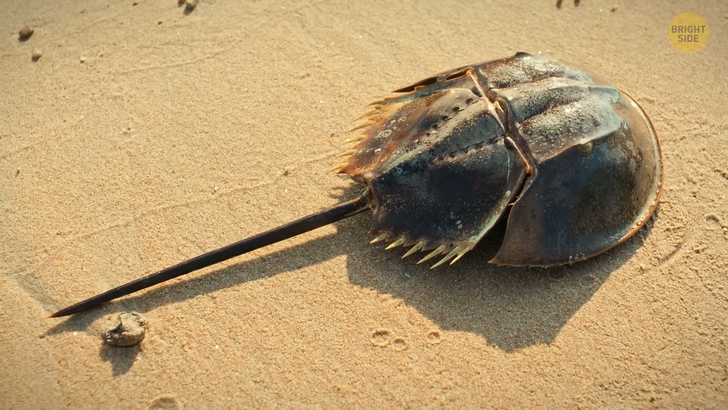
Let’s go even further back to 480,000,000 years ago. You wouldn’t think that anything that existed back then could possibly still be alive today. But the Horseshoe crab is not only still on this planet — it’s almost identical to its ancestors. Its whole body is protected by a thick plate with spikes pointing outwards.
It has 10 eyes scattered around the body. 2 are used for finding mates, and the remaining 8 act as light receptors. There is also a long tail. Although it looks menacing, its only use is to simply help flip itself back the right way up if it gets knocked over. Its design is so effective that whatever constant changes the planet has provided, it survived.
Although they look like they could be related to a lobster, they’re actually closer to spiders and scorpions than crabs or crustaceans. With a healthy diet of clams, crustaceans, and worms, they find enough to eat along the coasts of the Atlantic, Pacific, and Indian oceans.
They also feed on algae, so it makes sense why they managed to survive many food shortages caused by world events. With all the traits of the horseshoe crab, who knows, it might even outlive humans! Well, here’s to the next 480,000,000 years!











